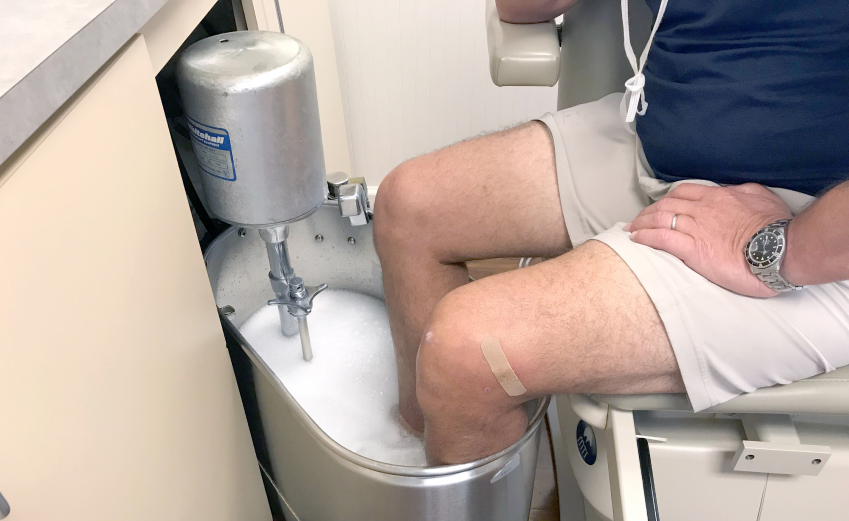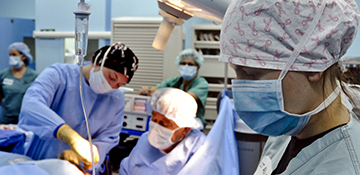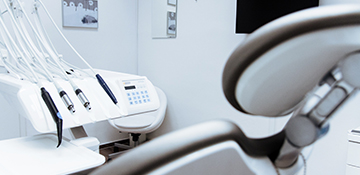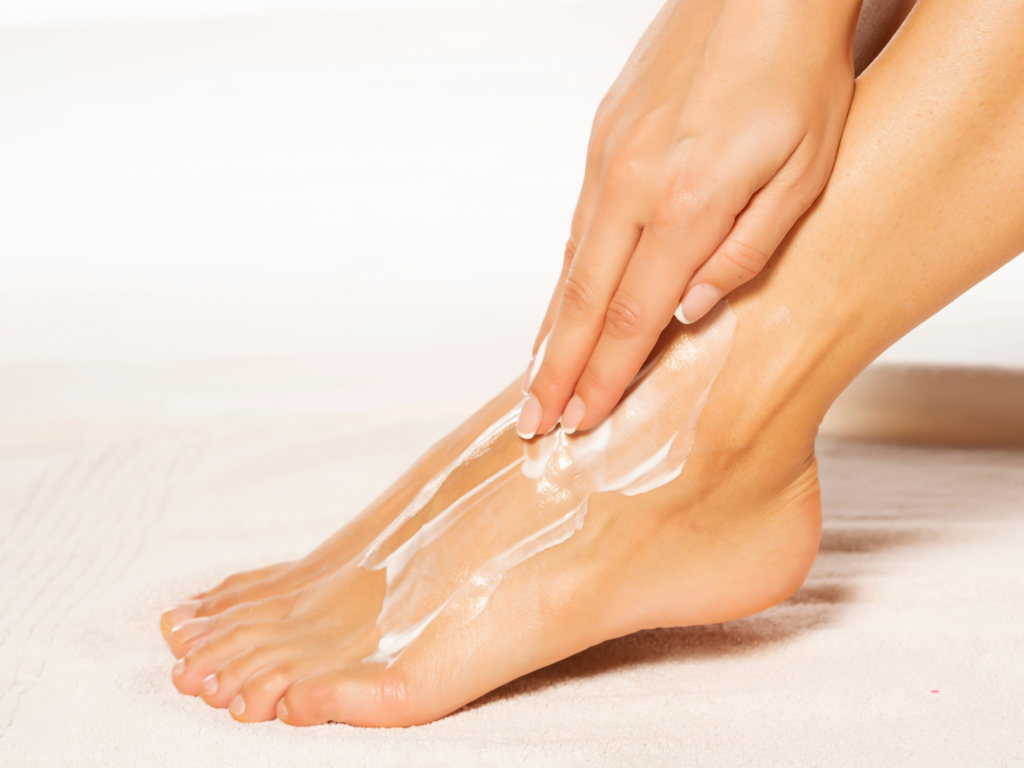Centers
We work with the Surgery Care Plus Program and these surgical locations: th
Elko Community Health Center
Northeastern Nevada Regional Hospital
Humboldt General Hospital
Our Medical Services
In-Office Services We Offer
Treatments include, but are not limited to:
Inflammatory Conditions
- Achilles Tendinitis
- Ankle Sprain
- Athlete’s Foot
- Cellulitis
- Gout
- Plantar Fasciitis
- Tendinitis
- Turf Toe
Structural Deformities
- Achilles Tendon Disorders
- Ankle Disorders
- Bunions
- Flatfoot
- Hammertoe Deformity
- Limb Length Discrepancy
- Pigeon Toed
- Toe Walking
Trauma and Injuries:
- Dislocation
- Emergency Injuries of Foot, Toe, or Ankle
- Fracture of Foot, Toe, or Ankle
- Hematoma
- Injury to Foot, Toe, or Ankle
- Puncture Wounds
Infections and Skin Conditions
- Abscess
- Fungal Nails
- Ganglion Cyst
- Gangrene
- Ingrown Nails
- Osteomyelitis
- Plantar Wart
- Skin Ulcerations
- Venous Stasis Disease
- Wound Care
Neurological and Circulatory Issues
- Diabetic Neuropathy
- Peripheral Arterial Disease
- Neuroma
- Pain in the Foot, Toe, or Ankle
- Plantar Fibroma
- Tarsal Tunnel Syndrome
We offer these Products

Custom Orthotics
To be worn in footwear. Crafted to meet the needs of the individual patient, they are created using an impression of the foot which duplicates any misalignments in the foot structure. They are designed to treat, adjust, and support various biomechanical disorders. They support and stabilize the foot and can help prevent repetitive overuse injuries. They can also help to prevent abnormal foot pronation (flattening of the arch) and reduce the impact from the ground (shock absorption) while walking or running.
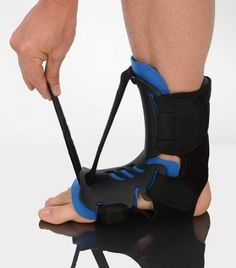
Night Splint
Since lack of flexibility in the calf muscle is a common cause of heel pain, plantar fasciitis, and Achilles tendonitis, night splints are used to improve calf muscle flexibility. Night splints can also be used during sleep to prevent night-time contracture of the calf muscle, so the first few steps in the morning are not painful.
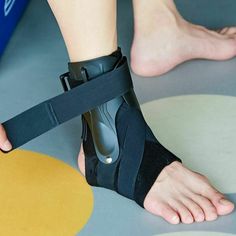
Ankle Brace
To be worn in footwear. The lace-up ankle brace provides effective support for individuals who experience ankle instability. It provides support and compression while allowing the patient to move freely and participate in daily activities. It can also help provide the support needed to prevent reinjury from ankle sprain. It is beneficial for individuals participating in rigorous sports activities.
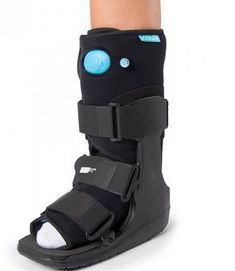
Equalizer Boot
Indicated to help heal and alleviate the pain associated with ankle sprain, fractures, and soft tissue & ligament injuries. It provides support and compression. A shock-absorbing sole lessens the harm of heel strikes in the process of walking.
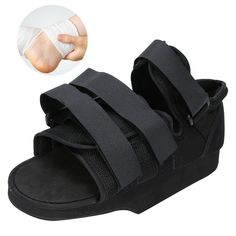
Surgical Shoes
Offers protection for the foot and reduces pain while walking. The sole is semi-rigid and limits the bending of the foot. It is reinforced with a padded heel to stabilize the foot and reduce slippage.

Over The Counter Arch Support Sandals
Designed to duplicate the arch support; they help provide stability, comfort, and support in a slip-on sandal or flip-flop style for casual warm weather wear.
Our Speciality Services
Platelet Rich Plasma Therapy (PRP)
Platelet Rich Plasma (PRP), offers a promising solution to accelerate healing in many injuries without subjecting the patient to significant risk. the philosophy is to merge cutting-edge technology with the body’s natural ability to heal itself.
PRP uses the patient’s own blood which is prepared in a centrifuge to concentrate the patient’s platelet 5 times higher than normal levels. PRP is virtually a cocktail of many proteins that collectively stimulate, repair, and regenerate many injuries.
It has become a popular treatment in sports medicine to help athletes get back to activity in a timely manner.
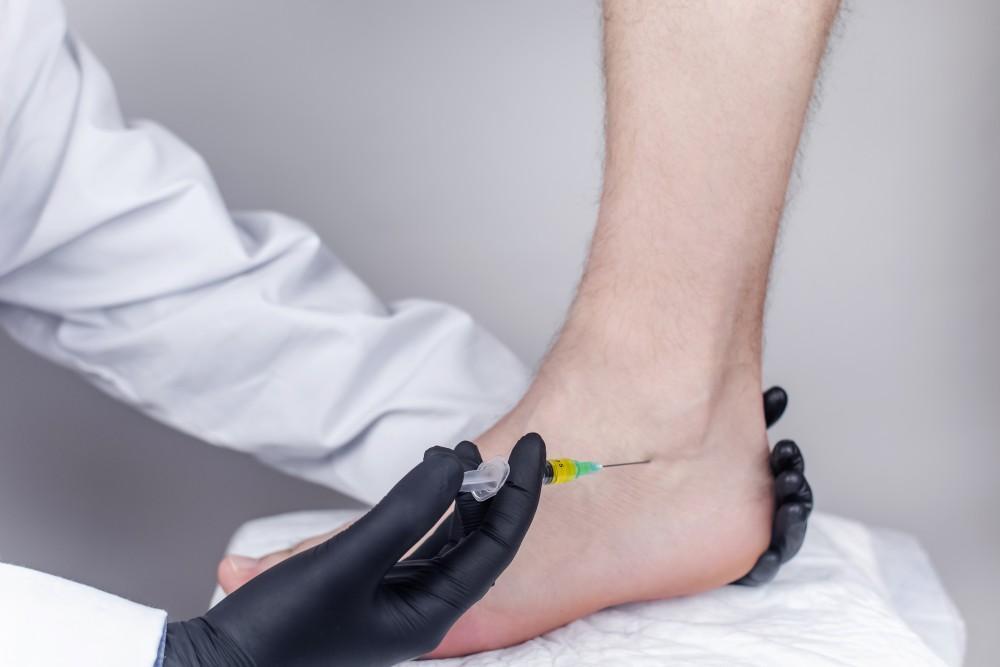
Trauma Achilles Tendon Rupture
In some cases, surgery is needed to repair a rupture in the Achilles tendon and any related soft-tissue injuries that may have also occurred. The goal of surgery is to help restore the length and function of the Achilles tendon.
A variety of surgical techniques are available to repair the rupture. In selecting the procedure, your surgeon has taken into consideration the extent of your injury, your age, your activity level, and other factors. Techniques for repairing an Achilles tendon rupture fall into two general categories – open (involving one long incision) and percutaneous (involving multiple smaller incisions). The open procedure, which may be modified somewhat by your surgeon to address your needs is described here:
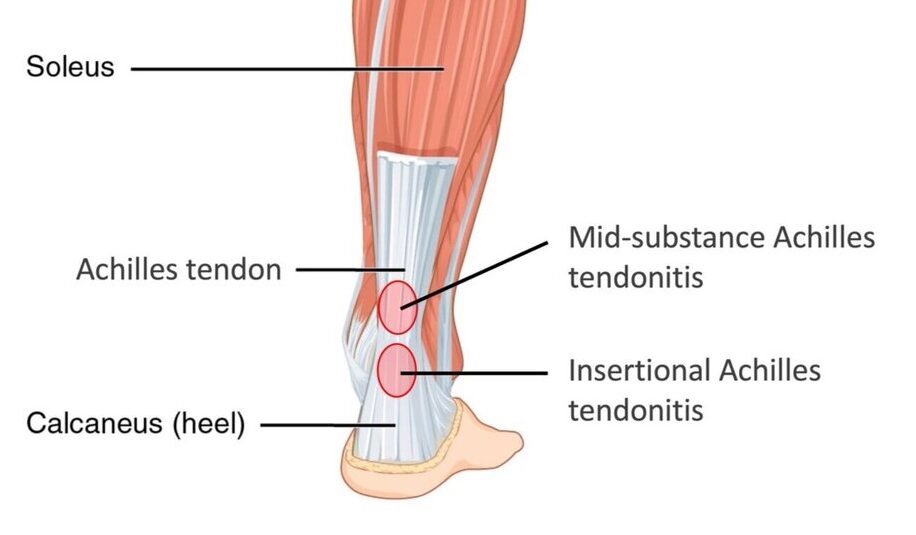
Achilles Tendon Repair
After making an incision on the back of the heel to gain access to the Achilles tendon, the surgeon:
- Identifies the rupture
- Cleans out the damaged tissue and residual debris that was caused by the rear
- Stitches together the healthy portions of the tendon, resulting in a restored Achilles tendon
- In some cases, additional surgical procedures may be needed such as the transfer of another healthy tendon or the lengthening of the Achilles
- Closes the incision with stitches and applies a sterile bandage
- Immobilizes the foot and ankle with a cast, splint, or boot.
Recovery
Recovery from this procedure takes 6-12 weeks. During a portion of this period, weight bearing on the operative foot may not be permitted.
Surgery for Chronic Lateral Ankle Instability
For many people with chronic ankle instability, surgery is an appropriate option because of the degree of their ankle instability or their lack of response to non-surgical approaches. The goal of the surgery is to create greater stability in the ankle and reduce pain.
Various types of surgical procedures are available to treat ankle instability, and sometimes a combination of techniques is used. In selecting the surgical approach, your surgeon has taken into consideration the extent of your ankle instability, your age, your activity level, and other factors. Three general types of procedures, which may be modified somewhat by your surgeon to address your needs, are described below.
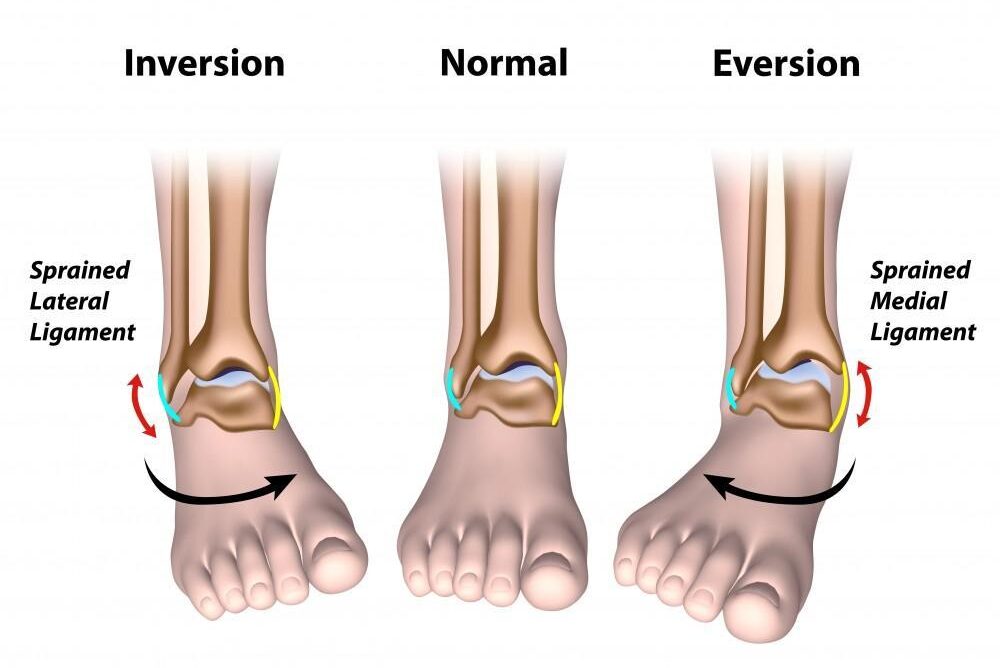
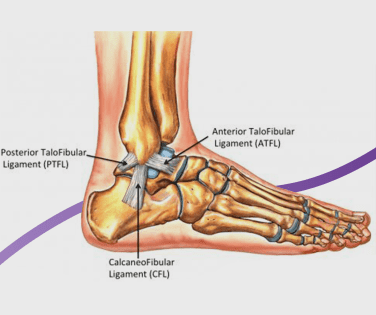
Primary Ligament Reconstruction
The primary ligament repair is suitable for selected patients who have one or more ligaments in the ankle joints that are stretched or ruptured (torn).
After making an incision on the outside of the ankle to gain access to the joint and ligaments, the surgeon:
- Inspects the joint capsule and the ligaments that are stretched or torn
- Repairs the damaged or torn ligament to restore stability
- Pulls the ends together into an overlapping position to restore the strength of the ligament
- Covers the repaired ligament with a dense band of connective tissue (the extensor retinaculum) to reinforce the ligament
- Evaluates the range of motion of the ankle to ensure that it moves properly
- Closes the incision with stitches and applies a sterile bandage
- Immobilizes the ankle with a cast or splint
Secondary Ligament Repair
A tendon transfer is suitable as a first-line surgical approach for selected patients or as a second option for patients whose ankle instability has returned. Some tendon transfers use the patient’s tendon, whereas others use a cadaver tendon.
After making an incision above the ankle on the outside of the foot to gain access to the join and tendons, the surgeon:
- Identifies and cuts the weakened or damaged tendon high above the ankle level
- Reattaches the upper portion of the tendon by passing it through “tunnels” drilled in the ankle bone, creating a tightened tendon
- Stitches the other piece of the cut tendon to an adjacent tendon
- Evaluates the range of motion of the ankle to ensure that it moves properly
- Closes the incision with stitches and applies a sterile bandage
- Immobilizes the ankle with a cast or splint
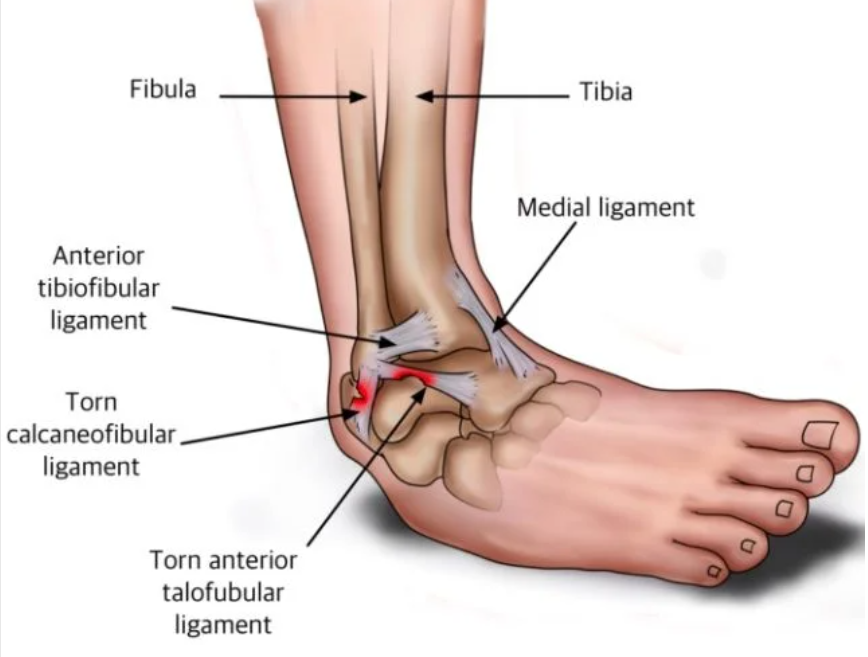

Peroneal Tendon Repair
This procedure is undertaken to repair one or both peroneal tendons that are torn, damaged or, weakened.
After making an incision on the outside of the ankle to gain access to the joint and peroneal tendons, the surgeon:
- Inspects the peroneal retinaculum, peroneal tendons, and fibula
- Cleans out the damaged tissue
- Repairs the tear in the tendon by stitching together the torn parts
- If the tendon has become damaged, a procedure is performed to restore the tendon to its normal, rounded shape
- Evaluates the range of motion of the ankle to ensure that it moves properly
- Closes the incision with the stitches and applies a sterile bandage
- Immobilizes the ankle with a cast or splint
Recovery
Recovery from these procedures generally takes about 6 to 12 weeks. During a portion of this period, weight bearing may not be permitted.
ELKO'S FOOT AND ANKLE SPECIALIST
Address
- 2078 Idaho Street Elko, Nevada 89801
- 775-738-1100
- 118 E. Haskell St. Suite E Winnemucca, Nevada 89445
- 775-621-5729
- 775-738-1101
Hours
Monday: 8:00 am – 5:00 pm
Tuesday: 8:00 am – 5:00 pm
Wednesday: 8:00 am – 5:00 pm
Thursday: 8:00 am – 5:00 pm
Friday: 9:00 am – 12:00 pm
Saturday & Sunday: Closed
Surgical Locations
Elko Community Health Center
Northeastern Nevada Regional Hospital
Humboldt General Hospital
Surgical Locations
Elko Community Health Center
Northeastern Nevada Regional Hospital
Humboldt General Hospital
Hours
Monday: 8:00 am – 5:00 pm
Tuesday: 8:00 am – 5:00 pm
Wednesday: 8:00 am – 5:00 pm
Thursday: 8:00 am – 5:00 pm
Friday: 9:00 am – 12:00 pm
Saturday & Sunday: Closed
Address
- 1995 Errecart Blvd, Suite 200 Elko, Nevada 89801
- 775-738-1100
- 118 E. Haskell St. Suite E Winnemucca, Nevada 89445
- 775-621-5729
- 775-738-1101


